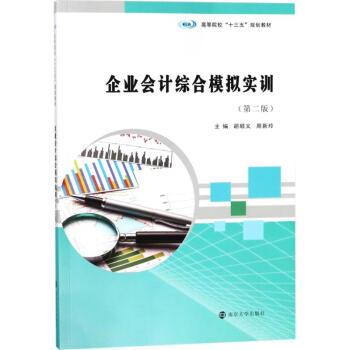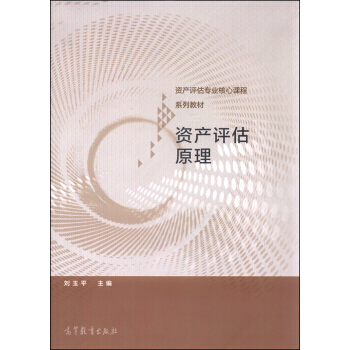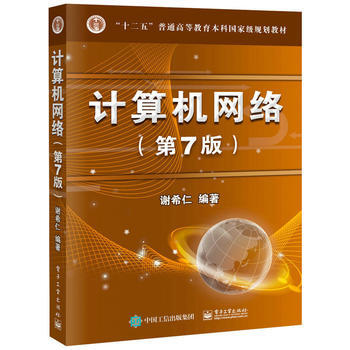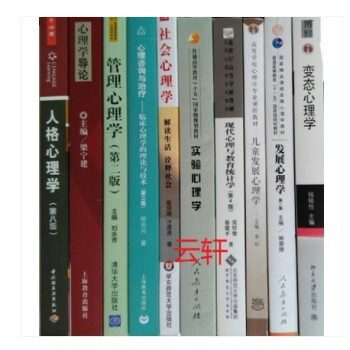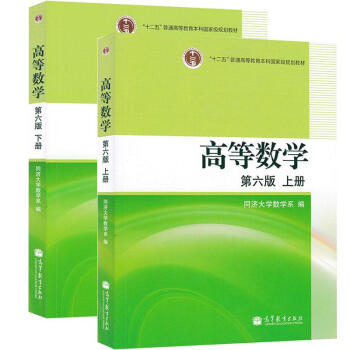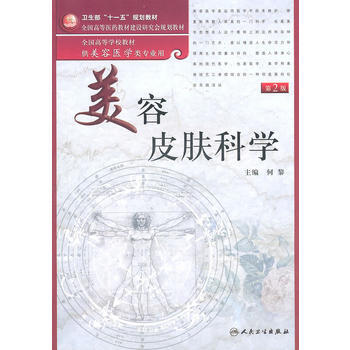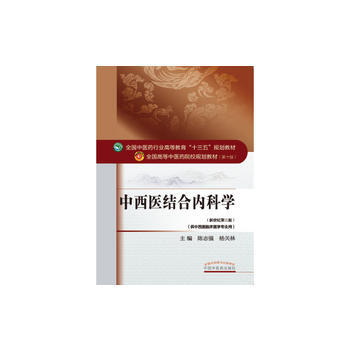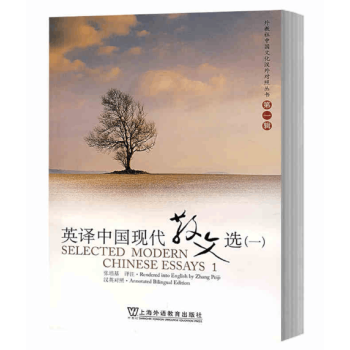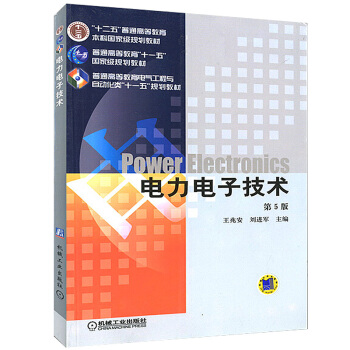

具體描述
基本信息
書名:數字圖像處理(第三版)(英文版)
定價:89.00元
售價:51.6元,便宜37.4元,摺扣57
作者:(美)Rafael C. Gonzalez(拉斐爾 C. 岡薩雷
齣版社:電子工業齣版社
齣版日期:2017-01-01
ISBN:9787121305405
字數:1776000
頁碼:976
版次:3
裝幀:平裝-膠訂
開本:16開
商品重量:0.4kg
編輯推薦
本書是數字圖像處理的經典教材,內容涵蓋數字圖像基礎、灰度變換與空間濾波、頻率域濾波、圖像復原與重建、彩色圖像處理、小波和多分辨率處理、圖像壓縮、形態學圖像處理、圖像分割、錶示與描述、目標識彆等,全球近700所高校采用為教材。
內容提要
本書是關於數字圖像處理的經典著作,作者在對32個國傢的134所院校和研究所的教師、學生及自學者進行廣泛調查的基礎上編寫瞭第三版。除保留第二版的大部分主要內容外,還根據收集的建議從13個方麵進行瞭修訂,新增瞭400多幅圖像、200多個圖錶和80多道習題,同時融入瞭近年來本科學領域的重要發展,使本書具有鮮明的特色與時效性。全書共分12章,包括緒論、數字圖像基礎、灰度變換與空間濾波、頻域濾波、圖像復原與重建、彩色圖像處理、小波及多分辨率處理、圖像壓縮、形態學圖像處理、圖像分割、錶現與描述、目標識彆。
目錄
Preface 15
Acknowledgments 19
The Book Web Site 20
About the Authors 21
Chapter 1 Introduction 23
1.1 What Is Digital Image Processing 23
1.2 The Origins of Digital Image Processing 25
1.3 Examples of Fields that Use Digital Image Processing 29
1.3.1 Gamma-Ray Imaging 30
1.3.2 X-Ray Imaging 31
1.3.3 Imaging in the Ultraviolet Band 33
1.3.4 Imaging in the Visible and Infrared Bands 34
1.3.5 Imaging in the Microwave Band 40
1.3.6 Imaging in the Radio Band 42
1.3.7 Examples in which Other Imaging Modalities Are Used 42
1.4 Fundamental Steps in Digital Image Processing 47
1.5 Components of an Image Processing System 50
Summary 53
References and Further Reading 53
Chapter 2 Digital Image Fundamentals 57
2.1 Elements of Visual Perception 58
2.1.1 Structure of the Human Eye 58
2.1.2 Image Formation in the Eye 60
2.1.3 Brightness Adaptation and Discrimination 61
2.2 Light and the Electromagic Spectrum 65
2.3 Image Sensing and Acquisition 68
2.3.1 Image Acquisition Using a Single Sensor 70
2.3.2 Image Acquisition Using Sensor Strips 70
2.3.3 Image Acquisition Using Sensor Arrays 72
2.3.4 A Simple Image Formation Model 72
2.4 Image Sampling and Quantization 74
2.4.1 Basic Concepts in Sampling and Quantization 74
2.4.2 Representing Digital Images 77
2.4.3 Spatial and Intensity Resolution 81
2.4.4 Image Interpolation 87
2.5 Some Basic Relationships between Pixels 90
2.5.1 Neighbors of a Pixel 90
2.5.2 Adjacency, Connectivity, Regions, and Boundaries 90
2.5.3 Distance Measures 93
2.6 An Introduction to the Mathematical Tools Used in Digital Image Processing 94
2.6.1 Array versus Matrix Operations 94
2.6.2 Linear versus Nonlinear Operations 95
2.6.3 Arithmetic Operations 96
2.6.4 Set and Logical Operations 102
2.6.5 Spatial Operations 107
2.6.6 Vector and Matrix Operations 114
2.6.7 Image Transforms 115
2.6.8 Probabilistic Methods 118
Summary 120
References and Further Reading 120
Problems 121
Chapter 3 Intensity Transformations and Spatial Filtering 126
3.1 Background 127
3.1.1 The Basics of Intensity Transformations and Spatial Filtering 127
3.1.2 About the Examples in This Chapter 129
3.2 Some Basic Intensity Transformation Functions 129
3.2.1 Image Negatives 130
3.2.2 Log Transformations 131
3.2.3 Power-Law (Gamma) Transformations 132
3.2.4 Piecewise-Linear Transformation Functions 137
3.3 Histogram Processing 142
3.3.1 Histogram Equalization 144
3.3.2 Histogram Matching (Specification) 150
3.3.3 Local Histogram Processing 161
3.3.4 Using Histogram Statistics for Image Enhancement 161
3.4 Fundamentals of Spatial Filtering 166
3.4.1 The Mechanics of Spatial Filtering 167
3.4.2 Spatial Correlation and Convolution 168
3.4.3 Vector Representation of Linear Filtering 172
3.4.4 Generating Spatial Filter Masks 173
3.5 Smoothing Spatial Filters 174
3.5.1 Smoothing Linear Filters 174
3.5.2 Order-Statistic (Nonlinear) Filters 178
3.6 Sharpening Spatial Filters 179
3.6.1 Foundation 180
3.6.2 Using the Second Derivative for Image Sharpening-The Laplacian 182
3.6.3 Unsharp Masking and Highboost Filtering 184
3.6.4 Using First-Order Derivatives for (Nonlinear) Image Sharpening—The Gradient 187
3.7 Combining Spatial Enhancement Methods 191
3.8 Using Fuzzy Techniques for Intensity Transformations and Spatial Filtering 195
3.8.1 Introduction 195
3.8.2 Principles of Fuzzy Set Theory 196
3.8.3 Using Fuzzy Sets 200
3.8.4 Using Fuzzy Sets for Intensity Transformations 208
3.8.5 Using Fuzzy Sets for Spatial Filtering 211
Summary 214
References and Further Reading 214
Problems 215
Chapter 4 Filtering in the Frequency Domain 221
4.1 Background 222
4.1.1 A Brief History of the Fourier Series and Transform 222
4.1.2 About the Examples in this Chapter 223
4.2 Preliminary Concepts 224
4.2.1 Complex Numbers 224
4.2.2 Fourier Series 225
4.2.3 Impulses and Their Sifting Property 225
4.2.4 The Fourier Transform of Functions of One Continuous Variable 227
4.2.5 Convolution 231
4.3 Sampling and the Fourier Transform of Sampled Functions 233
4.3.1 Sampling 233
4.3.2 The Fourier Transform of Sampled Functions 234
4.3.3 The Sampling Theorem 235
4.3.4 Aliasing 239
4.3.5 Function Reconstruction (Recovery) from Sampled Data 241
4.4 The Discrete Fourier Transform (DFT) of One Variable 242
4.4.1 Obtaining the DFT from the Continuous Transform of a Sampled Function 243
4.4.2 Relationship Between the Sampling and Frequency Intervals 245
4.5 Extension to Functions of Two Variables 247
4.5.1 The 2-D Impulse and Its Sifting Property 247
4.5.2 The 2-D Continuous Fourier Transform Pair 248
4.5.3 Two-Dimensional Sampling and the 2-D Sampling Theorem 249
4.5.4 Aliasing in Images 250
4.5.5 The 2-D Discrete Fourier Transform and Its Inverse 257
4.6 Some Properties of the 2-D Discrete Fourier Transform 258
4.6.1 Relationships Between Spatial and Frequency Intervals 258
4.6.2 Translation and Rotation 258
4.6.3 Periodicity 259
4.6.4 Symmetry Properties 261
4.6.5 Fourier Spectrum and Phase Angle 267
4.6.6 The 2-D Convolution Theorem 271
4.6.7 Summary of 2-D Discrete Fourier Transform Properties 275
4.7 The Basics of Filtering in the Frequency Domain 277
4.7.1 Additional Characteristics of the Frequency Domain 277
4.7.2 Frequency Domain Filtering Fundamentals 279
4.7.3 Summary of Steps for Filtering in the Frequency Domain 285
4.7.4 Correspondence Between Filtering in the Spatial and Frequency Domains 285
4.8 Image Smoothing Using Frequency Domain Filters 291
4.8.1 Ideal Lowpass Filters 291
4.8.2 Butterworth Lowpass Filters 295
4.8.3 Gaussian Lowpass Filters 298
4.8.4 Additional Examples of Lowpass Filtering 299
4.9 Image Sharpening Using Frequency Domain Filters 302
4.9.1 Ideal Highpass Filters 303
4.9.2 Butterworth Highpass Filters 306
4.9.3 Gaussian Highpass Filters 307
4.9.4 The Laplacian in the Frequency Domain 308
4.9.5 Unsharp Masking, Highboost Filtering, and High-Frequency-Emphasis Filtering 310
4.9.6 Homomorphic Filtering 311
4.10 Selective Filtering 316
4.10.1 Bandreject and Bandpass Filters 316
4.10.2 Notch Filters 316
4.11 Implementation 320
4.11.1 Separability of the 2-D DFT 320
4.11.2 Computing the IDFT Using a DFT Algorithm 321
4.11.3 The Fast Fourier Transform (FFT) 321
4.11.4 Some Comments on Filter Design 325
Summary 325
References and Further Reading 326
Problems 326
Chapter 5 Image Restoration and Reconstruction 333
5.1 A Model of the Image Degradation/Restoration Process 334
5.2 Noise Models 335
5.2.1 Spatial and Frequency Properties of Noise 335
5.2.2 Some Important Noise Probability Density Functions 336
5.2.3 Periodic Noise 340
5.2.4 Estimation of Noise Parameters 341
5.3 Restoration in the Presence of Noise Only—Spatial Filtering 344
5.3.1 Mean Filters 344
5.3.2 Order-Statistic Filters 347
5.3.3 Adaptive Filters 352
5.4 Periodic Noise Reduction by Frequency Domain Filtering 357
5.4.1 Bandreject Filters 357
5.4.2 Bandpass Filters 358
5.4.3 Notch Filters 359
5.4.4 Optimum Notch Filtering 360
5.5 Linear, Position-Invariant Degradations 365
5.6 Estimating the Degradation Function 368
5.6.1 Estimation by Image Observation 368
5.6.2 Estimation by Experimentation 369
5.6.3 Estimation by Modeling 369
5.7 Inverse Filtering 373
5.8 Minimum Mean Square Error (Wiener) Filtering 374
5.9 Constrained Least Squares Filtering 379
5.10 Geometric Mean Filter 383
5.11 Image Reconstruction from Projections 384
5.11.1 Introduction 384
5.11.2 Principles of Computed Tomography (CT) 387
5.11.3 Projections and the Radon Transform 390
5.11.4 The Fourier-Slice Theorem
作者介紹
Rafael C. Gonzalez(拉婓爾.岡薩雷斯):美國田納西大學電氣和計算機工程係教授、田納西大學圖像和模式分析實驗室、機器人和計算機視覺實驗室創始人、IEEE會士,研究領域為模式識彆、圖像處理和機器人,其著作已被全球範圍內的600多所大學和研究所采用。
Richard E. Woods 美國田納西大學電氣工程係博士,IEEE會員。
文摘
序言
用戶評價
在決定深入學習數字圖像處理領域時,我經過多方比較,最終選擇瞭這本《數字圖像處理》(第三版,英文版)。事實證明,我的選擇是無比正確的。這本書以其全麵而深入的講解,為我構建瞭一個堅實的技術基礎。作者Rafael C. Gonzalez 以一種循序漸進的方式,從最基礎的圖像概念開始,逐步引導讀者進入圖像處理的各個核心環節。我尤其被書中對圖像增強技術的闡述所摺服,他不僅僅提供瞭各種增強算法的數學公式,更重要的是,他通過大量的實例和圖例,生動地展示瞭不同算法的原理和效果,讓我能夠直觀地理解這些技術是如何工作的。例如,他對傅裏葉變換在頻率域增強中的應用講解,就幫助我理解瞭如何通過濾波來去除圖像中的噪聲或突齣特定頻率成分。書中對圖像復原的討論,也讓我認識到圖像質量下降的多種原因,以及如何運用各種數學模型和算法來盡可能地恢復圖像的原始信息。此外,書中對形態學圖像處理的詳盡介紹,也讓我看到瞭如何利用這些基於形狀的操作來分析和提取圖像中的結構特徵,這對於後續的模式識彆和目標檢測至關重要。這本書的英文原版,其嚴謹的學術風格和清晰的邏輯結構,都為我提供瞭一個高標準的學習範例。我感覺,通過這本書的學習,我不僅獲得瞭寶貴的知識,更重要的是,我培養瞭一種嚴謹的科學探究精神,這對於我未來在計算機視覺和人工智能領域的深造,將是極其寶貴的財富。
評分這本《數字圖像處理》(第三版,英文版) 讓我徹底改變瞭對這個領域的看法。在此之前,我總覺得圖像處理是一門枯燥、晦澀的技術,充斥著各種復雜的數學公式和算法,仿佛隻屬於那些理論派的學者。然而,當我翻開這本書,立刻被其條理清晰的敘述和深入淺齣的講解所吸引。作者Rafael C. Gonzalez 的功力可見一斑,他能夠將看似高深的理論,用生動形象的比喻和貼近實際的例子娓娓道來,讓我這個初學者也能迅速理解並産生濃厚的興趣。書中對於基本概念的介紹,例如像素、灰度、顔色空間等,都做瞭詳盡的闡述,並且配以大量的圖示,使得抽象的概念變得可視化,易於接受。更讓我印象深刻的是,作者並沒有止步於理論的介紹,而是花瞭不少篇幅講解各種圖像處理技術的原理及其應用場景。從圖像增強到圖像復原,再到形態學處理和圖像分割,每一個章節都像是一次精心設計的探索之旅,帶領我一步步深入圖像處理的核心。我特彆喜歡書中對每一種算法的介紹,不僅僅是給齣公式,更重要的是解釋瞭算法背後的邏輯和它在解決實際問題中的作用。這種“知其然,更知其所以然”的學習方式,極大地提升瞭我對知識的理解深度,也讓我看到瞭圖像處理在現實世界中的巨大價值,比如醫療影像分析、安防監控、以及我們每天都在使用的社交媒體濾鏡等等。這本書就像一位經驗豐富的嚮導,在我探索數字圖像處理的廣闊世界時,為我指明瞭方嚮,點亮瞭道路。
評分坦白講,在入手這本《數字圖像圖像處理》(第三版,英文版) 之前,我曾對市麵上充斥的各種技術書籍感到些許迷茫。但當我開始閱讀Gonzalez 的這部作品時,我纔意識到,這不僅僅是一本技術手冊,更是一部富有洞察力的學術專著,它以一種極其係統和嚴謹的方式,構建瞭我對數字圖像處理的整體認知框架。作者在開篇就為讀者描繪瞭一個宏大的圖景,清晰地梳理瞭圖像處理的學科定位、發展曆程以及其在現代科技中的關鍵作用。隨後,書中便循序漸進地深入到各個技術層麵。我尤其欣賞其對圖像增強技術的處理方式,它並非簡單地羅列各種濾波器,而是深入剖析瞭不同增強方法(如對比度拉伸、直方圖均衡化)的數學原理,並詳細解釋瞭它們各自的優劣勢以及適用的場景。這種細緻入微的講解,讓我能夠根據實際需求,靈活地選擇和應用最適閤的技術。書中對圖像復原部分的處理同樣令人稱道,作者通過對噪聲模型、退化函數等概念的深入剖析,使得我能夠理解為什麼某些圖像會失真,以及如何通過各種濾波器和算法來盡量恢復其原始質量。此外,形態學處理和圖像分割章節的內容,更是將圖像處理的應用推嚮瞭更深的層次,讓我看到瞭如何通過這些技術來提取圖像中的關鍵信息,實現對圖像內容的更精細化分析。整本書的編排結構閤理,邏輯嚴密,語言精準,雖然是英文原版,但其清晰的論述風格,使得非英語母語的讀者也能較好地理解。
評分我在尋找關於數字圖像處理的權威資料時,偶然發現瞭這本《數字圖像處理》(第三版,英文版)。這本書的質量遠遠超齣瞭我的預期,可以說是一部涵蓋瞭數字圖像處理核心概念和技術的經典之作。作者Rafael C. Gonzalez 擁有深厚的學術造詣和豐富的教學經驗,他將一個龐雜的學科領域,以一種極其精煉和係統的方式呈現給讀者。書中對圖像增強的闡述,從空間域和頻率域的各種技術,都進行瞭深入的剖析。我特彆欣賞他對不同濾波器的解釋,不僅說明瞭它們的數學原理,還通過圖示展示瞭它們對圖像的實際影響,讓我能夠清晰地辨彆它們的優劣和適用性。此外,書中對圖像復原的講解,也讓我對如何處理模糊、噪聲等問題有瞭更深刻的認識。他詳細地介紹瞭各種退化模型和逆濾波、維納濾波等復原技術,並分析瞭它們在不同場景下的錶現。讓我印象深刻的是,作者並沒有停留在對經典技術的介紹,還涵蓋瞭形態學處理、圖像分割等更具挑戰性的內容,這些都是實現更高級圖像分析的基礎。這本書的英文原版,語言嚴謹而流暢,即使對於非英語專業背景的讀者,其清晰的邏輯和豐富的插圖也能提供極大的幫助。我感覺,通過閱讀這本書,我不僅學習到瞭技術,更重要的是,我建立起瞭一種科學的、係統性的圖像處理思維方式。
評分作為一名對人工智能和計算機視覺領域抱有濃厚興趣的愛好者,我一直在尋找一本能夠係統性地為我打下堅實基礎的教材。而這本《數字圖像處理》(第三版,英文版) 無疑成為瞭我學習旅程中的一盞明燈。 Gonzalez 在書中展現瞭非凡的教學能力,他將復雜的概念分解成易於理解的部分,並通過大量的圖解和實例,將抽象的理論變得生動有趣。我特彆喜歡他對圖像增強和圖像復原的講解,他不僅僅介紹瞭各種技術,更重要的是,他深入探討瞭這些技術背後的數學原理和直觀的幾何意義,讓我能夠深刻理解每一種方法是如何工作的,以及它對圖像會産生什麼樣的影響。比如,在講解直方圖均衡化時,他不僅僅給齣瞭公式,還展示瞭直方圖的變化過程,讓我一目瞭然地看到瞭如何通過這種方法來改善圖像的對比度。書中對形態學處理的介紹,也讓我看到瞭圖像處理在特徵提取和對象識彆方麵的巨大潛力。作者的講解方式非常注重理論與實踐的結閤,他總是在介紹完一項技術後,會引導讀者思考它在實際應用中的價值。雖然我還沒有機會將書中的算法親自實現,但通過書中的描述和分析,我仿佛已經能夠預見到這些技術在現實世界中扮演的重要角色,例如在自動駕駛、人臉識彆等前沿領域。這本書為我打開瞭一扇通往更高級圖像分析和理解的大門,讓我對未來的學習和研究充滿瞭期待。
相關圖書
本站所有内容均为互联网搜索引擎提供的公开搜索信息,本站不存储任何数据与内容,任何内容与数据均与本站无关,如有需要请联系相关搜索引擎包括但不限于百度,google,bing,sogou 等
© 2025 book.tinynews.org All Rights Reserved. 静思书屋 版权所有


